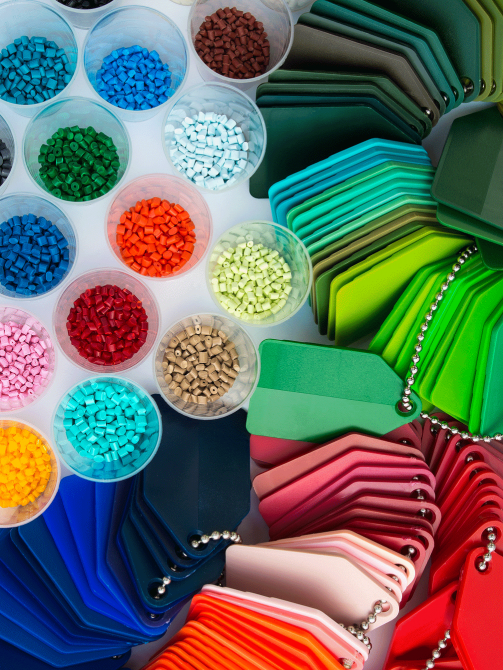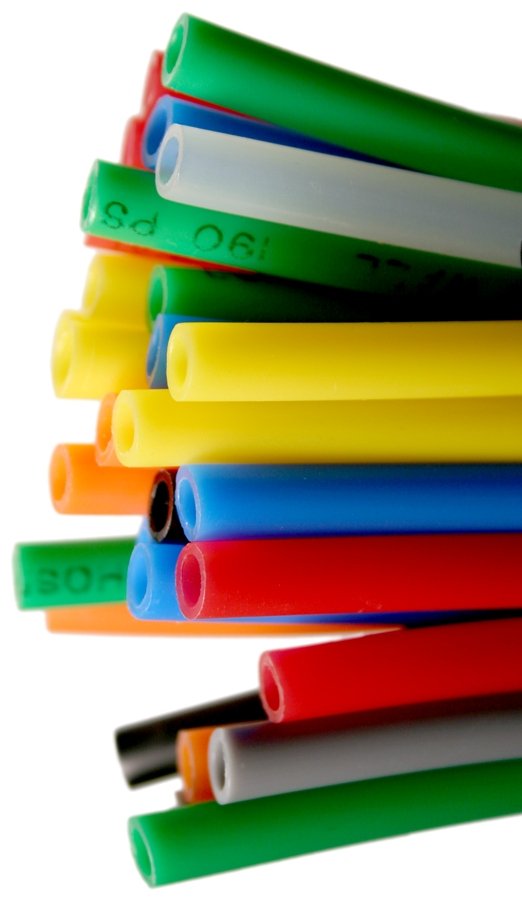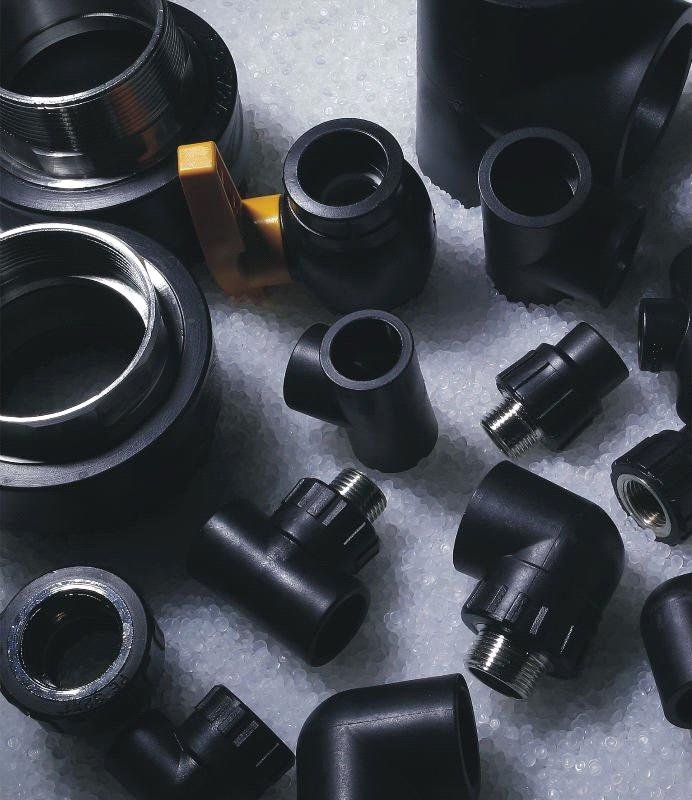PP
Polypropylene (PP) is a thermoplastic "addition polymer” made from the combination of propylene monomers. It is used in a variety of applications to include packaging for consumer products, plastic parts for various industries including the automotive industry, special devices like living hinges, and textiles.
Polypropylene has a relatively slippery surface which can make it a possible substitute for plastics like Acetal (POM) in low friction applications like gears or for use as a contact point for furniture.
Polypropylene also has a low density relative to other common plastics which translates to weight savings for manufacturers and distributors of injection molded Polypropylene parts. It has exceptional resistance at room temperature to organic solvents like fats but is subject to oxidation at higher temperatures (a potential issue during injection molding).
Another advantage of Polypropylene is that it can be easily copolymerized (essentially combined into a composite plastic) with other polymers like polyethylene. Copolymerization changes the material properties significantly, allowing for more robust engineering applications than are possible with pure polypropylene (more of a commodity plastic on its own).
Some of the most significant properties of polypropylene are:
<!-- Chemical Resistance: Diluted bases and acids don’t react readily with polypropylene, which makes it a good choice for containers of such liquids, such as cleaning agents, first-aid products, and more.
Elasticity and Toughness: Polypropylene will act with elasticity over a certain range of deflection (like all materials), but it will also experience plastic deformation early on in the deformation process, so it is generally considered a "tough" material. Toughness is an engineering term which is defined as a material's ability to deform (plastically, not elastically) without breaking..
Fatigue Resistance: Polypropylene retains its shape after a lot of torsion, bending, and/or flexing. This property is especially valuable for making living hinges.
Insulation: polypropylene has a very high resistance to electricity and is very useful for electronic components.
Transmissivity: Although Polypropylene can be made transparent, it is normally produced to be naturally opaque in color. Polypropylene can be used for applications where some transfer of light is important or where it is of aesthetic value.

You benefit from our
experience in delivering
effective solution to the
complex global supply chains
of some of the world’s biggest
corporations.
You benefit from every
innovation, whether it involves
a simple extension to our Air
and Ocean Freight products,
whether it means a
development in warehousing.
All of which explains why
you’ll find the team of
outstanding support at TGA
Export Co. ready to apply
their passion for solutions in
support of your business.





